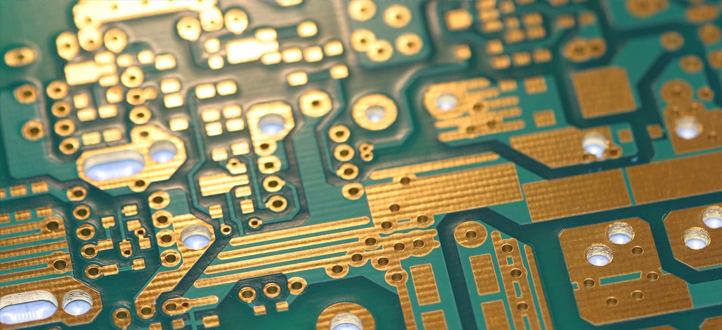The difference between PCB immersion gold and OSP?

The PCB immersion gold process is to plate a layer of nickel and then a layer of gold on the surface conductor of the PCB. The nickel plating is mainly to prevent the diffusion between gold and copper, and the gold plating is mainly to provide good solderability and oxidation resistance1. The immersion gold process is divided into two types: soft gold and hard gold. Soft gold is mainly used for making gold wires in chip packaging, and hard gold is mainly used for electrical interconnection at non-soldering places1.
The PCB OSP process is to chemically grow a layer of organic film on the clean bare copper surface. This film can ensure that the inner copper foil will not be oxidized before soldering, and it will evaporate when heated during soldering. The OSP process is an environmentally friendly process that meets the requirements of the RoHS directive and can be used for low-tech and high-tech PCBs.
The comparison between PCB immersion gold process and OSP process is as follows:
In terms of cost: the immersion gold process has a higher cost due to the use of precious gold elements, while the OSP process has a lower cost due to the use of organic matter.
In terms of solderability: the immersion gold process has good solderability, can withstand multiple reflow soldering, and is suitable for technologies such as lead-free soldering and COB bonding1 3; the OSP process also has good solderability, but the reflow The number of soldering is limited, nitrogen protection is required, and it is not suitable for crimping technology.
In terms of storage: the immersion gold process has a long storage time (>12 months) and is not easy to oxidize; the OSP process has a short storage time (<6 months>In terms of flatness: the immersion gold process has good flatness and is suitable for technologies such as fine-pitch components and BGA packaging; the OSP process has the best flatness and is suitable for technologies such as lead-free soldering and SMT.
In terms of reliability: the immersion gold process has good reliability, and it is not easy to cause black plate problems and micro-voids; the OSP process has general reliability, and is prone to tin whisker problems.
To sum up, the PCB immersion gold process and the OSP process have their own advantages and disadvantages. According to different product needs and design requirements, you can choose the appropriate surface treatment process. Generally speaking, the immersion gold process is suitable for high-end, high reliability, and high durability products, while the OSP process is suitable for products with low cost, environmental protection, and high flatness requirements.

